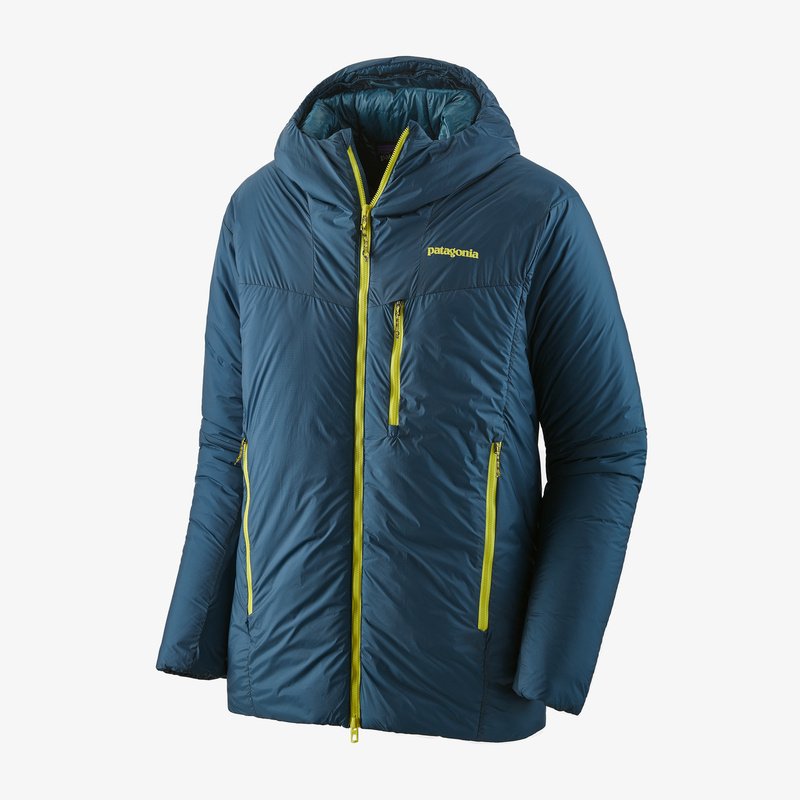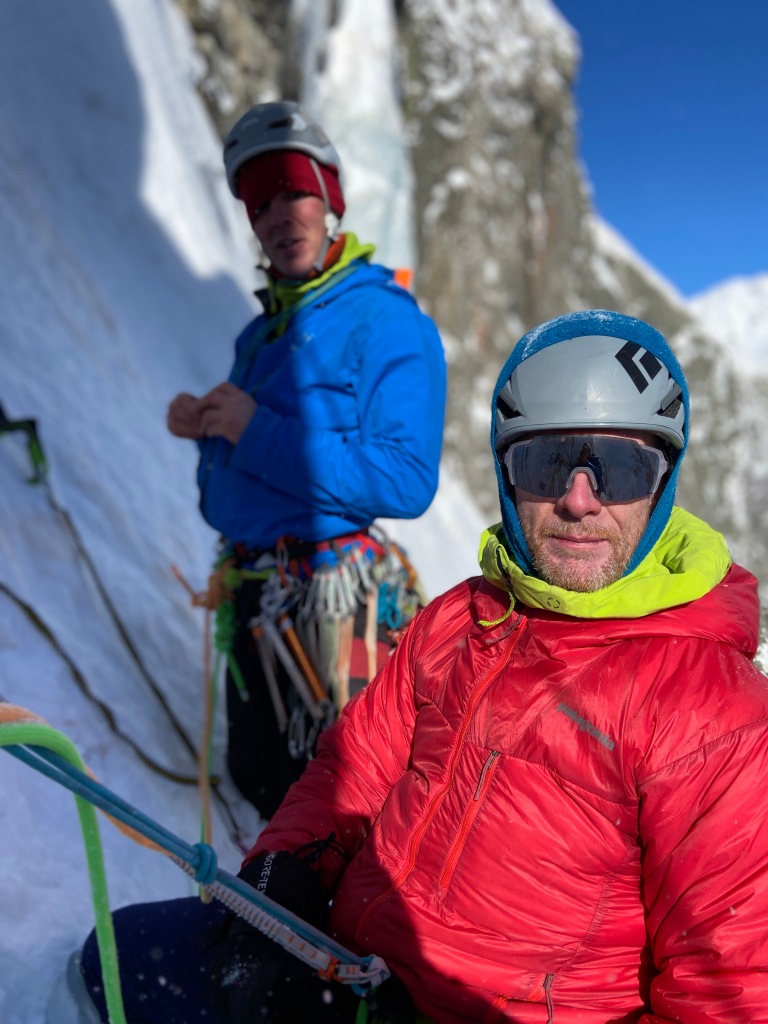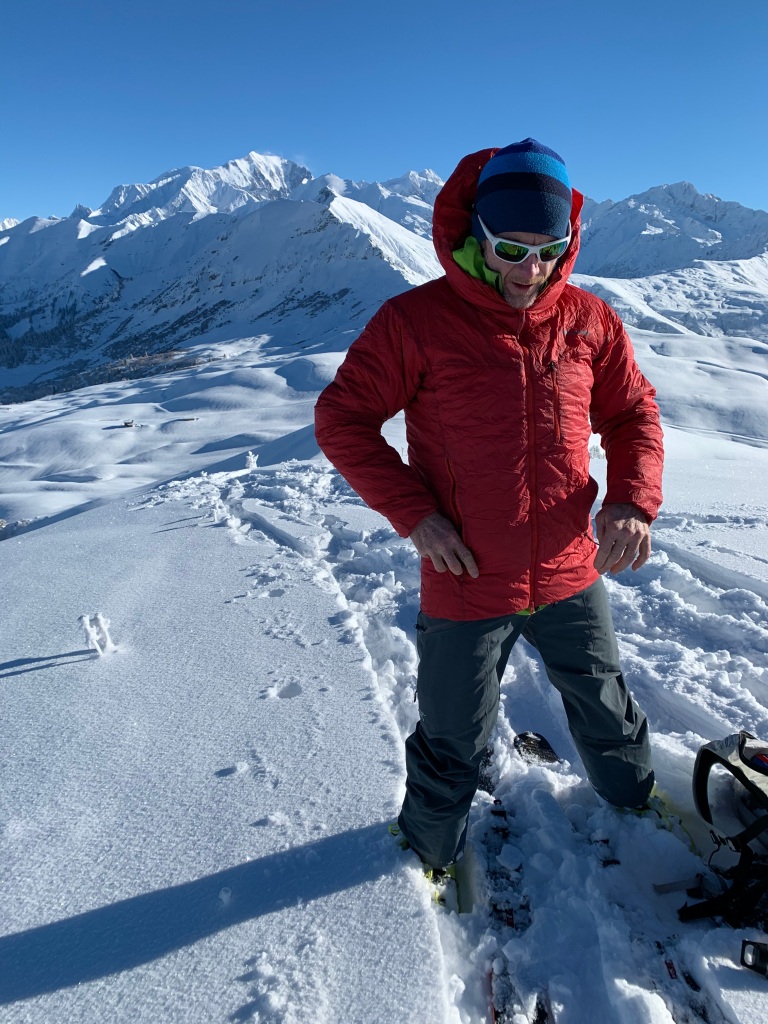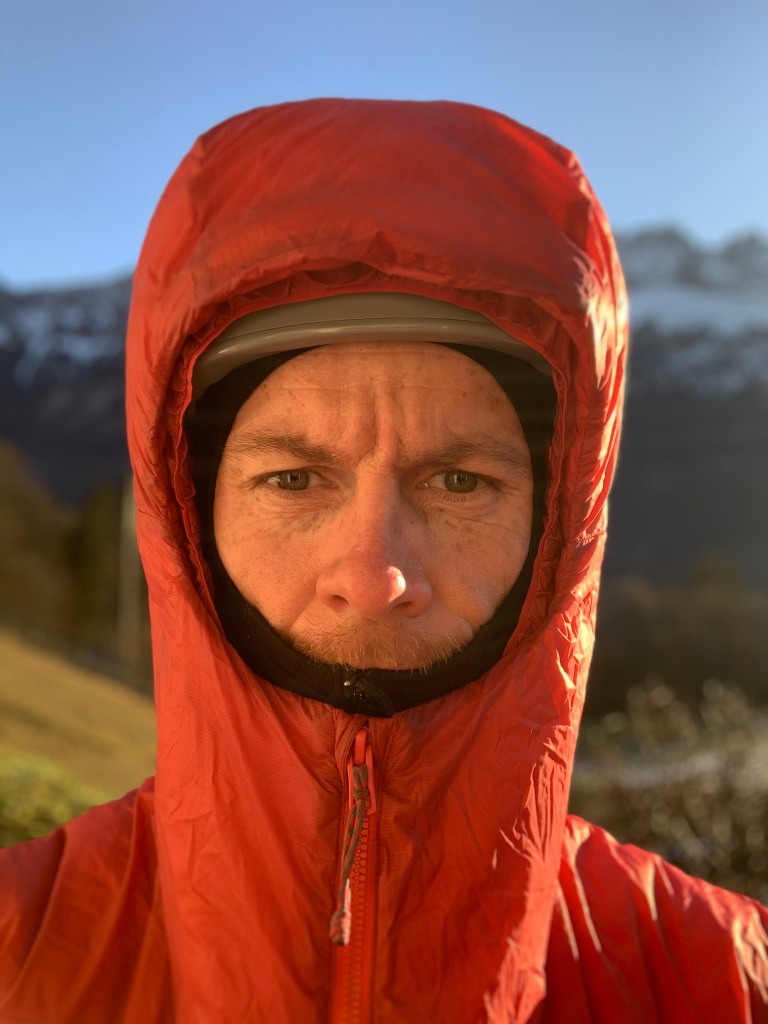

The first Patagonia DAS Parka was released in 1992 and was THE belay parka climbers and alpinists HAD TO OWN! I bought my first one in the early 2000s and reviewed a later incarnation on here in 2014 . After a brief hiatus from their range, Patagonia have (fortunately) brought the DAS back for this winter. There’s even a new DAS Lite!
So what is the DAS Parka and what is it for? (For more on the ins and outs of belay jackets and parkas including down versus synthetic read my article here.)

I’d describe the DAS as a belay parka for climbers and alpinists. The thing you put on when you stop – to stay warm and toasty, long belays on mixed pitches, or while your friend works their sport project, ice fall climbing and alpine bivis (planned or unplanned) – the DAS is the one you cuddle up to.
Patagonia say:
The ultimate all-conditions belay parka for bone-chilling days and unplanned bivies. The DAS® Parka uses PrimaLoft® Gold Insulation Eco with Cross Core™ technology that incorporates aerogel to provide the soft and compressible feel of down with the crucial warm-when-wet performance of synthetic. Fair Trade Certified™ sewn.
The DAS Parka (DAS stands for Dead Air Space) is a hooded belay parka. For a hooded belay parka to be effective it needs (in my humble opinion), to meet these simple criteria:
- A helmet compatible hood with good chin and face coverage.
- Long enough to cover your bum.
- A smooth 2 way zipper.
- Cut roomy to go over the top of my “moving layers’.
- Warm (this is subjective, I know)
On top of this it needs to have cuffs which seal simply (I’m not a fan of velcro, stretchy elastic best), internal stash pockets to put gloves water bottle etc, hand warmer pockets and a drawcord hem. It needs to be windproof. It also needs to still keep me warm when it’s damp or wet so for this reason it has to be synthetic insulation, not down.
So against these criteria, how does Patagonia’s DAS Parka measure up? Well first of all the hood is amazing, fitting well over a climbing helmet, without impeding your ability to look up or squashing the helmet onto the top of your head. It’s amazing the number of supposedly “helmet compatible” hoods that just don’t work – thankfully this is not one of them. The neck/collar zips high to keep your chin warm, so you can almost hide inside the jacket whilst your mate is forging upwards on their big lead!

The DAS has a kind of long, boxy cut – it’s not the prettiest “about town” coat but it’s thankfully, not go that in mind. It’s cut to just below the hip, so keeps your bum warm and sits over your harness. The 2 way zipper allows access to your belay loop from the bottom without fully unzipping, a crucial feature for a belay parka but I would like to see a press stud closer at the bottom of the zip to keep the hem together and help seal it even when the jacket is unzipped from the bottom a little.

Speaking of the zipper, this is probably my only criticism of the DAS as this particular zipper does seem prone to snagging on the inner and outer fabric (anyone else found this?) if you’re not super careful and can become a real pain to free, particularly out in the field. A small, semi rigid flap on the inner could stop this.
Going back to the cut of the DAS, Patagonia describe it as “Regular Fit”. I’m 174cm tall and weigh 67kg and my test sample was size Small. It was perfect for me being oversized enough to fit over the top of my moving layers. By this I mean (and I could/should write a whole article on clothing systems), when I’m moving (be that alpine climbing, ski touring etc) I try to dress so that I am comfortable during movement. I may actually feel a little cold in these layers when I set off or when I’m stopped. I might wear a wool base layer, a mid layer such as R1 or Nano Air depending on temperatures and then a soft-shell or hardshell jacket depending on the weather, season and conditions. I then layer my warm layers over the top of my moving layers when I stop.

This leads me on to talk about the fabric. Firstly the interior fabric is a 0.7-oz 10-denier 100% nylon ripstop Pertex® Quantum with a DWR finish. This fabric is nice and slippery so it slides easily over my other layers. It doesn’t snag and the Durable Water Repellant (DWR) finish means it doesn’t wet out or become saturated. The outer fabric is slightly heavier (for increased durability) 0.8-oz 10-denier 100% nylon ripstop Pertex® Quantum Pro with a PU dry coating and a DWR (durable water repellent) finish. Whilst it is not 100% waterproof, nor are the seams sealed, it does repel moisture admirably. It is also incredibly wind resistant.
One hugely important factor in a jacket like this is the insulation! For the DAS Parka Patagonia have continued to choose synthetic insulation rather than down. The simple reason for this is that synthetic insulation still works when its damp or wet; down does not.
There a few different synthetic insulation products on the market but Primaloft is generally regarded as the best. Patagonia use PrimaLoft® Gold Insulation Eco fused with aerogel technology which they say provides exceptional warmth and softness in a synthetic insulation; 133-g insulation all over with an extra 40-g at the core places where additional warmth is needed most! I asked Patagonia why they had chosen this insulation and also if they could explain a little more about Aerogel technology. They had this to say:
“We choose PrimaLoft® Gold Insulation Eco with Cross Core™ technology that incorporates aerogel to provide the soft and compressible feel of down with the crucial warm-when-wet performance of synthetic.”
They then provided this graphic (below) to explain Aerogel:

So how warm is it? Well I suppose it’s subjective depending on the individual but this is definitely a warm jacket, much warmer than a Nano Puff or Macro Puff, but less warm than the (down filled) Grade VII Parka. It’s a great choice for Scottish winter climbing, ice and mixed climbing in the Alps, winter alpinism with/without bivis, ski tours, as well as cool weather belays at the sport crag. It’s a proper belay parka, not a pub jacket! I’ve used mine for the last couple of months, cold weather belays at sport and mixed crags, ski tours and some alpinism. This winter it will be a regular fixture in my pack as I’ll spending a lot of time ice and mixed climbing and ski touring in the Alps, as well as taking on the ultimate test of Scottish winter!

A few other features that I like on the DAS are the huge internal stash pockets which are great for stuffing gloves or a water bottle. There are 2 zippered hand warmer pockets, a zippered chest pocket and some nice discreet thumb loops which help you avoid cold wrists. At 556g the DAS Parka offers excellent warmth to weight and comes with its own stuff sack.

It wouldn’t be fair to review a Patagonia piece without talking about environmental impact and sustainability. The brand is at the forefront when it comes to this and it is one of the reasons people may often choose a Patagonia product over a different brand. The DAS Parka includes a high proportion of recycled materials for example the Primaloft Gold Eco insulation contains 75% postconsumer recycled content. It is also Fair-trade Certified Sewn. You can learn more about the Impact of the product on the product page on Patagonia’s website.
In short, if you’re looking for a belay parka for the applications I’ve mentioned and particularly for use in cold, damp environments, the DAS Parka from Patagonia is almost perfect! It ticks all the major boxes and the hood is amazing!
- RRP: £420 or €450
- Buy it on the Patagonia website.
Disclaimer – CGR reviewers are never paid to provide a review and the website does not take advertising or link to affiliate sales. We are a bunch of keen climbers and travellers that accept sample products and offer an honest and independent review of the item. The reviewer will often keep the sample after reviewing it for both hygiene and safety reasons and more often it’s in no fit state to return!

Kevin Avery is an IFMGA Mountain Guide based in the Alps. He is available for climbing and ski guiding in the Alps, UK and further afield. Contact him via the website: www.truenorthalpine.com or email truenorthalpine@gmail.com

One comment